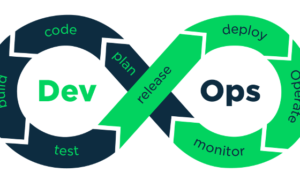Insurance, both in its life and non-life forms, plays an essential role in safeguarding individuals, businesses, and assets from unforeseen risks and financial burdens. This article delves into the intricacies of the Life and Non-life Insurance Market, providing insights into its current market outlook and the prevailing trends shaping the industry.
Market Outlook:
The Global Insurance Landscape
The global insurance market has long been a cornerstone of the financial services sector, offering peace of mind to individuals and businesses by providing financial protection against various risks. It encompasses two primary segments: life insurance and non-life insurance.
Life Insurance Market:
The outlook for the life insurance market remains positive, with several key factors driving growth:
- Population Aging: As the global population continues to age, there is an increasing demand for life insurance products. People seek to secure their families’ financial well-being and ensure a comfortable retirement.
- Wealth Accumulation: Life insurance policies often serve as a means of saving and wealth accumulation, making them attractive for individuals looking to build financial assets over time.
- Health Insurance Integration: The integration of health insurance with life insurance policies has gained traction, offering comprehensive coverage for policyholders and their families.
- Digital Transformation: The industry is undergoing a digital transformation, with insurers adopting technology to streamline operations, offer personalized policies, and enhance customer experiences.
- Sustainability: Many insurance companies are increasingly offering products that adhere to environmental, social, and governance (ESG) criteria, addressing the growing demand for sustainable and responsible investing.
Non-life Insurance Market:
The non-life insurance market, also known as property and casualty insurance, is equally poised for growth, driven by various factors:
- Economic Activity: As global economic activities expand, businesses and individuals are increasingly recognizing the importance of protecting their assets and liabilities through non-life insurance coverage.
- Regulatory Changes: Evolving regulatory landscapes, such as the implementation of new risk-based capital frameworks, are encouraging insurers to improve risk management practices and capital adequacy.
- Technological Advancements: The adoption of technology in risk assessment, underwriting, and claims processing is improving efficiency and reducing operational costs.
- Climate Change: Rising awareness of the impacts of climate change has led to increased demand for insurance against natural disasters and extreme weather events.
- Cybersecurity: The growing threat of cyberattacks has created a surge in demand for cyber insurance policies, covering losses from data breaches and cyber incidents.
Market Trends:
Embracing Change and Innovation
Several trends are reshaping the life and non-life insurance markets:
- Digital Transformation: Insurers are leveraging technology to offer convenient online platforms for policy issuance, claims processing, and customer service. Artificial intelligence and data analytics are used to assess risk and improve customer experiences.
- Personalization: The industry is moving towards more personalized insurance solutions. Data analytics and IoT devices enable insurers to tailor policies to individual needs and behaviors.
- Sustainability and ESG: Many insurers are integrating sustainability and ESG criteria into their investment portfolios and product offerings. This trend aligns with consumer preferences for responsible and ethical companies.
- Telematics and Usage-Based Insurance: In the non-life insurance sector, telematics-based policies that monitor driving behavior are becoming more popular, offering lower premiums to safe drivers.
- Parametric Insurance: This innovative approach pays out based on predefined triggers, such as weather conditions or seismic activity. It simplifies claims processing and provides quicker payouts, particularly for natural disasters.
- Cyber Insurance Expansion: As cyber threats continue to evolve, the demand for cyber insurance is expected to surge. Insurers are enhancing their cyber coverage offerings to address this growing risk.
- Collaborations and Partnerships: Insurers are increasingly collaborating with insurtech startups and technology companies to innovate and stay competitive. These partnerships drive product development and digitalization efforts.
In conclusion, the Non-Life Insurance Policy is a resilient and ever-evolving industry, adapting to changing consumer needs, technological advancements, and global challenges. The outlook for both segments remains positive, with growth potential in various areas. As insurers continue to embrace innovation and respond to evolving trends, they will play a vital role in safeguarding the financial well-being of individuals and the sustainability of businesses in an uncertain world.



































